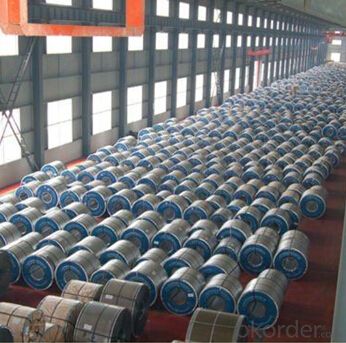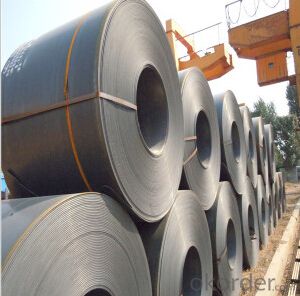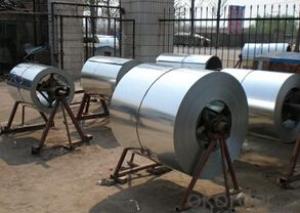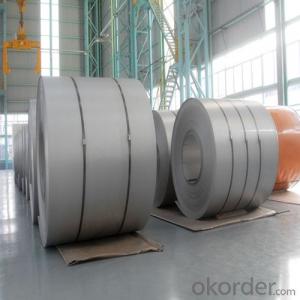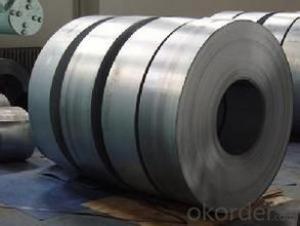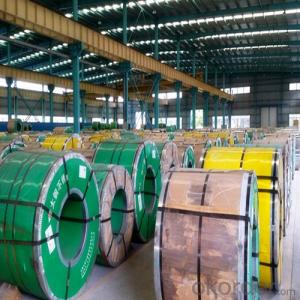JIS Hot Rolled Steel Coil (1250*3) for Construction
- Loading Port:
- Tianjin
- Payment Terms:
- TT OR LC
- Min Order Qty:
- 25 m.t.
- Supply Capability:
- 10000 m.t./month
OKorder Service Pledge
OKorder Financial Service
You Might Also Like
Hot Rolled Steel Coil description:
Model NO.:1250mm*3mm
Surface Treatment:Galvanized
Certification:ISO, SGS
Technique:Hot Rolled
Standard:ASTM, JIS, GB, AISI, DIN, BS
Application:Boiler Plate
Edge:Slit edge
Stock:Stock
Steel Grade:Q235B
1250*3:Mm
Export Markets:Global
Standard: AISI, ASTM, BS, DIN, GB, JIS
Steel Grade: Q235B
Thickness: 1.2mm-20mm
Place of Origin: Changzhou China (Mainland)
Technique: Hot Rolled
Application: Making pipes, etc.
Brand Name: SS400B, Q195, Q235, SPHC, SPHT1
Width: 900mm-2000mm
Length: Coils
Packaging & Delivery
Packaging Detail: Standard package
Delivery Detail: Within 7-15days after we receive your deposit
| Standard | AISI, ASTM, BS, DIN, GB, JIS, |
| Grade | Q195/Q235/Q345/45# |
| Thickness | 2.50,2.70,2.75,2.8,2.9,2.95,3.0,3.25,3.3,3.5,3.75,3.8,3.9,3.95,4,4.25,4.5,4.7,4.75,5,5.5,5.75, 6,6.75,7,7.5,7.75,8,8.75,9,9.5,9.75,10,10.5,11,11.5,12 ,15.75 |
| Width | 685/735/1010/1250/1500/1800/2000mm |
| Coil Weight | 685/735 __6.5 T 1250 __16.5T 1500 __27.5T 1800/2000__32.5T |
| Application | construction, household appliance, Automobile, light industry, etc |
| Packaging | Standard package, suitable for transportation. |
| Delivery | Within 30 days after contract signed |
| Payment term | T/T or L/C |

- Q: How are steel coils used in the manufacturing of storage shelves?
- Steel coils are used in the manufacturing of storage shelves by being processed and formed into various components such as uprights, beams, and brackets. These components are then assembled to create sturdy and durable shelving units. The high strength and structural integrity of steel coils ensure that the storage shelves can support heavy loads and withstand the rigors of daily use.
- Q: I want to know because I'm going to Hershey Park on Wednesday and Steel Force looks about the same size, so, I wanted to know. It's not that Steel Force is too big for me.
- steel force breaks the 200ft mark and is a steel out and back roller coaster. Tidal force is a water ride that is about 100 ft tall. If you can do Steel Force then you should be able to handle anything at Hersheypark. the on;y ride they have bigger is the Kissing Tower
- Q: I have a belly button piercing and the metal is stainless steel.. I was wondering does it develop rust whenever you go shower and clean it? Can I still swim in the summer with it or do I have to take it out? What happens if I swim in the pool with it?
- No it won't rust. Just make sure to get the pool water out of the piercing when done at the pool. Just to avoid drying out the skin too much.
- Q: I asked a question last week about stainless steel and got some great answers. I combed all over the internet to try to figure this one out but could not find anything. What resists bending better: chrome vanadium steel (i.e. a steel commonly used to make tools) or stainless steel 304. My guess would be the chrome vanadium alloy but thats just a guess. Which on resist's bending better and by how much (#'s please :-)). Also, if anyone knows if chrome vanadium steel is cheaper than stainless steel 304 that would be awesome? I can't find a price per pound on chrome vanadium steel anywhere! Please help. Thanks in advance-Josh
- Fill the pot up w/cold water to cover the burned on rice. Bring it up to a boil. Do it again w/some high powered soap in the mix. This time let the water sit in the pan until its luke warm, dump it out and scrub it up w/the plastic scouring pad. You should be all set.
- Q: What are the dimensions of steel coils used in the aerospace industry?
- The dimensions of steel coils utilized in the aerospace sector exhibit variability, contingent upon the particular application and prerequisites. Nonetheless, in a general sense, steel coils intended for aerospace purposes typically possess standardized dimensions to ensure compatibility and facilitate utilization. Ordinarily, the thickness of aerospace-grade steel coils falls within the range of 0.008 inches (0.2 mm) to 0.125 inches (3.2 mm). The width may span from approximately 0.5 inches (12.7 mm) to 72 inches (1829 mm), although narrower widths are more frequently encountered. Regarding the coil's length, it can extend from several hundred feet to thousands of feet, contingent upon the specific requirements of the aerospace manufacturer. It should be emphasized that these dimensions are not rigid and can be tailored to meet the requirements of the aircraft or aerospace component being produced. The dimensions of steel coils can also vary depending on the specific steel alloy employed and the manufacturing procedures implemented. Ultimately, the dimensions of steel coils within the aerospace field are determined by factors such as strength, weight, durability, and the specific requirements of the aerospace manufacturer or project.
- Q: Have spent two days making a specialized knife out of 304 stainless steel, after throwing into a log it bent slightly arghhhh. Is it worth continuing to finish it off or start all over again with different kind of steel if so which kind should i use.
- Stainless Steel For Knife Making
- Q: How are steel coils coated to prevent corrosion?
- Steel coils are coated to prevent corrosion through a process known as galvanization. This involves applying a protective layer of zinc onto the surface of the steel coils. The zinc acts as a barrier, preventing the steel from coming into contact with moisture and oxygen, which are the main causes of corrosion. This coating not only provides excellent corrosion resistance but also enhances the durability and longevity of the steel coils.
- Q: How do steel coil manufacturers contribute to local economies?
- Steel coil manufacturers contribute to local economies in several ways: 1. Job creation: Steel coil manufacturing facilities require a significant workforce to operate, including skilled workers, engineers, technicians, and support staff. By establishing and expanding manufacturing plants, steel coil manufacturers create employment opportunities for local residents. This leads to reduced unemployment rates and increased income levels, which in turn stimulates local spending and economic growth. 2. Supplier networks: Steel coil manufacturers rely on a wide range of suppliers for raw materials, equipment, and services. This creates a network of local businesses that benefit from the demand generated by manufacturing operations. These suppliers include steel producers, logistics companies, packaging providers, maintenance service providers, and many others. The presence of a steel coil manufacturer can stimulate the growth and development of these local businesses, enhancing the overall economic vitality of the region. 3. Secondary industries: The steel coil manufacturing industry acts as a catalyst for the development of secondary industries. These industries include steel fabrication, construction, automotive manufacturing, machinery production, and many others that rely on steel as a primary input. The presence of a steel coil manufacturer in a local economy can attract and support the growth of these industries, leading to increased economic activity and job opportunities. 4. Tax revenue: Steel coil manufacturers contribute to the local economy through the payment of various taxes. These include corporate income taxes, property taxes, sales taxes, and employment taxes. The tax revenue generated by these manufacturers is often significant and can be used by local governments to fund public infrastructure projects, education, healthcare services, and other essential services that benefit the community. 5. Economic multiplier effect: The economic impact of steel coil manufacturers extends beyond their direct operations. The presence of these manufacturers attracts other businesses and industries to the region, leading to a multiplier effect. For example, steel distributors, fabricators, and processors may establish operations nearby to take advantage of the proximity to the manufacturer. This creates a cluster of related industries that further contribute to the local economy, creating a self-sustaining cycle of economic growth and development. In summary, steel coil manufacturers contribute to local economies by creating jobs, supporting local suppliers, stimulating secondary industries, generating tax revenue, and triggering an economic multiplier effect. Their presence enhances the economic vitality of the region, leading to increased employment opportunities, income levels, and overall economic growth.
- Q: How are steel coils used in the production of wind turbines?
- Steel coils are used in the production of wind turbines to manufacture the tower, nacelle, and other structural components. The coils are processed and shaped into various parts, ensuring the turbines have a sturdy and durable construction. Additionally, steel coils are employed in the manufacturing of the turbine blades, providing strength and reliability to withstand the forces of wind.
- Q: What is the role of steel coils in the automotive industry?
- The automotive industry heavily relies on steel coils as the primary raw material for manufacturing various vehicle components. These coils, made from high-quality steel, are shaped into a continuous strip that can be easily processed to create desired automobile parts. One crucial application of steel coils in the automotive industry is their role in producing body panels and frames. Through stamping and forming techniques, these coils are transformed into panels like doors, hoods, fenders, and roofs. Steel coils provide the necessary strength, durability, and rigidity to protect passengers and other vehicle components from external forces. Furthermore, steel coils are also used in manufacturing various structural components of automobiles. Chassis, suspension systems, engine cradles, and brackets are typically produced using steel coils due to their excellent mechanical properties. Their high tensile strength enhances the overall structural integrity of the vehicle, ensuring safety. Additionally, steel coils are integral in producing automotive springs, which are essential for the suspension system. Coil springs, leaf springs, and torsion bars are commonly used to absorb shocks, provide stability, and maintain proper ride height. The utilization of steel coils in these applications guarantees optimal performance, durability, and longevity of the suspension system. In conclusion, the versatility, strength, and durability of steel coils make them vital in the automotive industry. They are utilized in manufacturing body panels, frames, structural components, and suspension systems, contributing to the overall safety, reliability, and performance of vehicles.
Send your message to us
JIS Hot Rolled Steel Coil (1250*3) for Construction
- Loading Port:
- Tianjin
- Payment Terms:
- TT OR LC
- Min Order Qty:
- 25 m.t.
- Supply Capability:
- 10000 m.t./month
OKorder Service Pledge
OKorder Financial Service
Similar products
Hot products
Hot Searches
Related keywords


